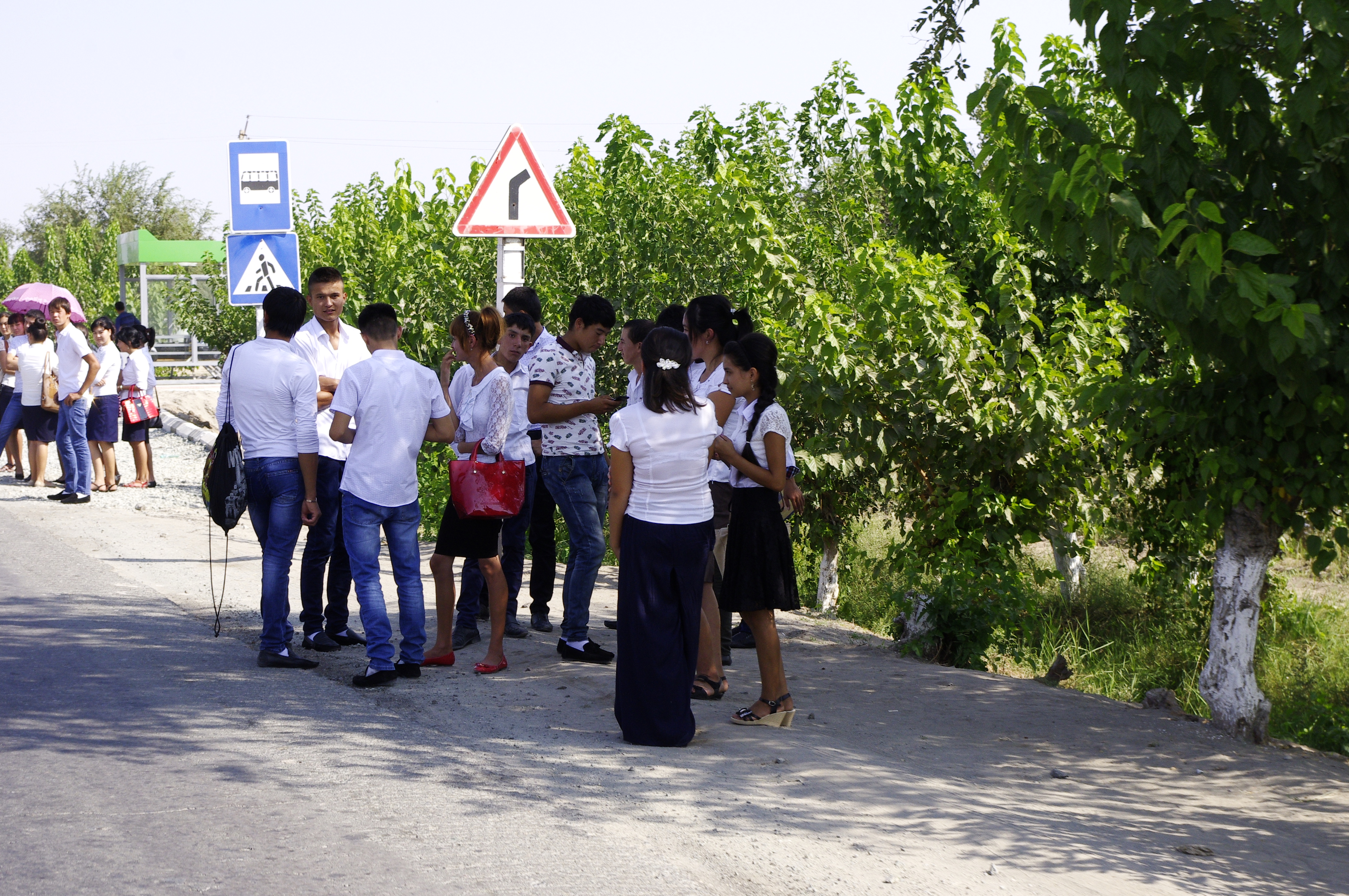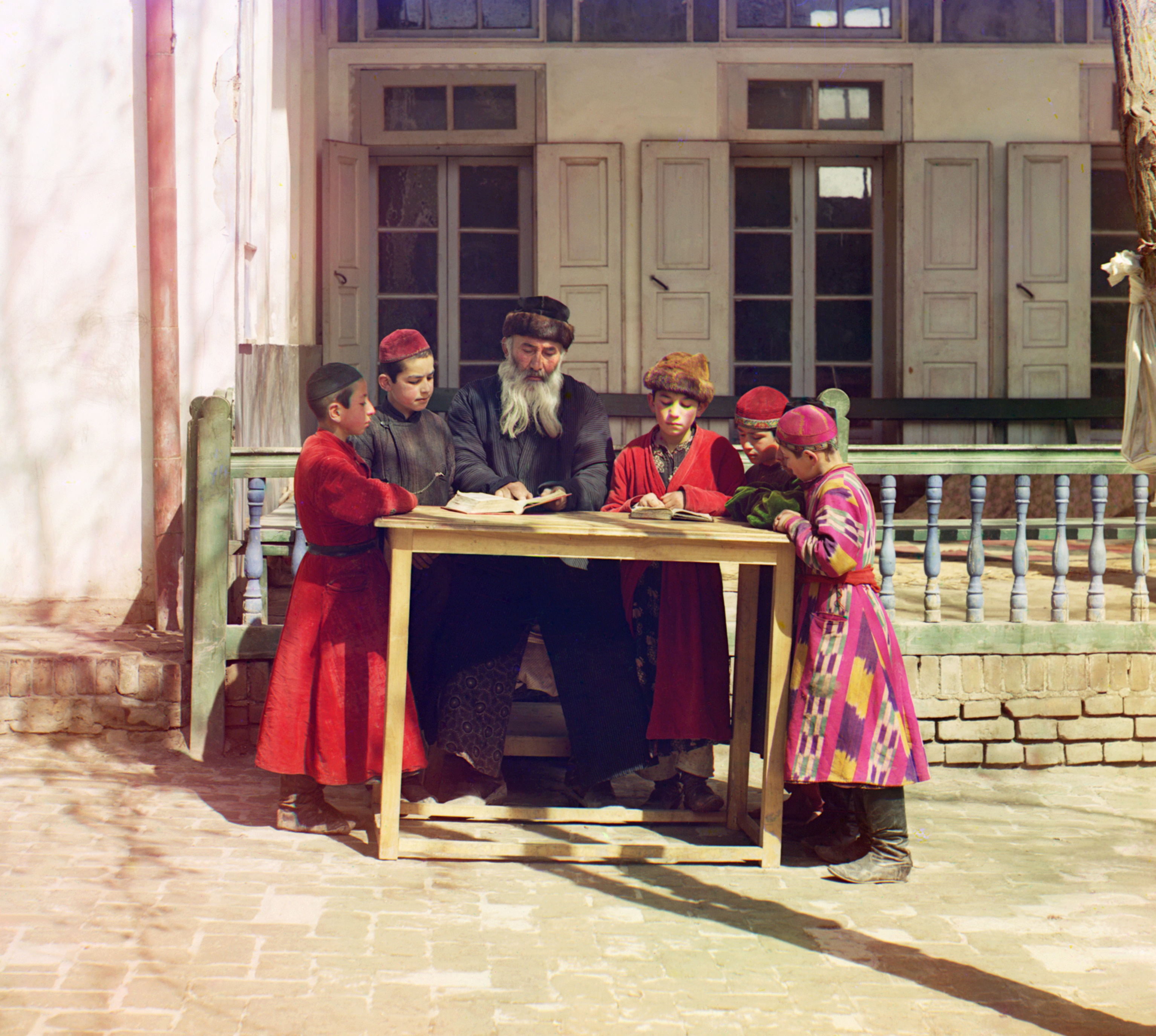|
Svetlana Gorshenina
Svetlana Gorshenina (also spelt Svetlana Goršenina; born Svetlana Michaïlovna Gorshenina) is an historian, art historian, historiographer and specialist on Central Asia, mainly involved in the history of Turkestan of the nineteenth to the early twentieth century and the early years of Soviet rule in the region. She is Research Professor, EUR'ORBEM (CNRS - CNRS/Sorbonne Université, UMR 8224, Paris). Her works appear mostly in French language. Career A graduate of the Tashkent State University, Svetlana Gorshenina defended her first PhD thesis in 1996 under the direction of Galina Pugachenkova and Valery Germanov at the Institute of History of the Academy of Sciences of Uzbekistan. Then she has a second doctorate in 2007 at the Universities of Lausanne and Paris I-Sorbonne (under the direction of Henri-Paul Francfort and Patrick Sériot), and finally, in 2016, a habilitation on the cultural heritage of Turkestan at the Institute of Oriental Languages and Civilizations (INALCO, P ... [...More Info...] [...Related Items...] OR: [Wikipedia] [Google] [Baidu] |
International Standard Name Identifier
The International Standard Name Identifier (ISNI) is an identifier system for uniquely identifying the public identities of contributors to media content such as books, television programmes, and newspaper articles. Such an identifier consists of 16 digits. It can optionally be displayed as divided into four blocks. ISNI can be used to disambiguate named entities that might otherwise be confused, and links the data about names that are collected and used in all sectors of the media industries. It was developed under the auspices of the International Organization for Standardization (ISO) aDraft International Standard 27729 the valid standard was published on 15 March 2012. The ISO technical committee 46, subcommittee 9 (TC 46/SC 9) is responsible for the development of the standard. ISNI format The FAQ of the isni.org websites states "An ISNI is made up of 16 digits, the last character being a check character." Format without space *MARC: it was proposed to store the ISNI witho ... [...More Info...] [...Related Items...] OR: [Wikipedia] [Google] [Baidu] |
Central Asian Studies
Central Asian studies is the discipline of studying the culture, history, and languages of Central Asia. The roots of Central Asian studies as a social science discipline goes to 19th century Anglo-Russian Great Game. During the 19th century, Central Asia became a subject of systematical information collection and organization thanks to the numerous travels made by British and Russian agents, soldiers, scholars into the region. After the collapse of the Soviet Union, interest in the field increased considerably. Central Asian studies in contemporary times is represented by a plethora of prominent scholars, institutions and academic programs throughout the world. History The roots of Central Asian studies as a social science discipline goes to 19th century Anglo-Russian Great Game. During the 19th century, Central Asia became a subject of systematical information collection and organization thanks to the numerous travels made by British and Russian agents, soldiers, scholars into t ... [...More Info...] [...Related Items...] OR: [Wikipedia] [Google] [Baidu] |
Uzbekistani Expatriates In France
The demographics of Uzbekistan are the demographic features of the population of Uzbekistan, including population growth, population density, ethnicity, education level, health, economic status, religious affiliations, and other aspects of the population. The nationality of any person from Uzbekistan is Uzbekistani, while the ethnic Uzbek majority call themselves Uzbeks. Much of the data is estimated because the last census was carried out in Soviet times in 1989. Demographic trends Uzbekistan is Central Asia's most populous country. Its 35 million people ( estimate) comprise nearly half the region's total population. The population of Uzbekistan is very young: 25.1% of its people are younger than 14. According to official sources, Uzbeks comprise a majority (84.4%) of the total population. Other ethnic groups, as of 1996 estimates, include Russians (5.5% of the population), Tajiks (5%), Kazakhs (3%), Karakalpaks (2.5%), and Tatars (1.5%).Uzbekistan iCIA World Factbook/ref> ... [...More Info...] [...Related Items...] OR: [Wikipedia] [Google] [Baidu] |
21st-century Women Writers
The 1st century was the century spanning AD 1 ( I) through AD 100 ( C) according to the Julian calendar. It is often written as the or to distinguish it from the 1st century BC (or BCE) which preceded it. The 1st century is considered part of the Classical era, epoch, or historical period. The 1st century also saw the appearance of Christianity. During this period, Europe, North Africa and the Near East fell under increasing domination by the Roman Empire, which continued expanding, most notably conquering Britain under the emperor Claudius (AD 43). The reforms introduced by Augustus during his long reign stabilized the empire after the turmoil of the previous century's civil wars. Later in the century the Julio-Claudian dynasty, which had been founded by Augustus, came to an end with the suicide of Nero in AD 68. There followed the famous Year of Four Emperors, a brief period of civil war and instability, which was finally brought to an end by Vespasian, ninth Roman emperor, ... [...More Info...] [...Related Items...] OR: [Wikipedia] [Google] [Baidu] |
21st-century Swiss Historians
The 1st century was the century spanning AD 1 ( I) through AD 100 ( C) according to the Julian calendar. It is often written as the or to distinguish it from the 1st century BC (or BCE) which preceded it. The 1st century is considered part of the Classical era, epoch, or historical period. The 1st century also saw the appearance of Christianity. During this period, Europe, North Africa and the Near East fell under increasing domination by the Roman Empire, which continued expanding, most notably conquering Britain under the emperor Claudius (AD 43). The reforms introduced by Augustus during his long reign stabilized the empire after the turmoil of the previous century's civil wars. Later in the century the Julio-Claudian dynasty, which had been founded by Augustus, came to an end with the suicide of Nero in AD 68. There followed the famous Year of Four Emperors, a brief period of civil war and instability, which was finally brought to an end by Vespasian, ninth Roman emperor, a ... [...More Info...] [...Related Items...] OR: [Wikipedia] [Google] [Baidu] |
Women Historians
A woman is an adult female human. Prior to adulthood, a female human is referred to as a girl (a female child or adolescent). The plural ''women'' is sometimes used in certain phrases such as "women's rights" to denote female humans regardless of age. Typically, women inherit a pair of X chromosomes, one from each parent, and are capable of pregnancy and giving birth from puberty until menopause. More generally, sex differentiation of the female fetus is governed by the lack of a present, or functioning, SRY-gene on either one of the respective sex chromosomes. Female anatomy is distinguished from male anatomy by the female reproductive system, which includes the ovaries, fallopian tubes, uterus, vagina, and vulva. A fully developed woman generally has a wider pelvis, broader hips, and larger breasts than an adult man. Women have significantly less facial and other body hair, have a higher body fat composition, and are on average shorter and less muscular than men. Throug ... [...More Info...] [...Related Items...] OR: [Wikipedia] [Google] [Baidu] |
Uzbekistani Historians
The demographics of Uzbekistan are the demographic features of the population of Uzbekistan, including population growth, population density, ethnicity, education level, health, economic status, religious affiliations, and other aspects of the population. The nationality of any person from Uzbekistan is Uzbekistani, while the ethnic Uzbek majority call themselves Uzbeks. Much of the data is estimated because the last census was carried out in Soviet times in 1989. Demographic trends Uzbekistan is Central Asia's most populous country. Its 35 million people ( estimate) comprise nearly half the region's total population. The population of Uzbekistan is very young: 25.1% of its people are younger than 14. According to official sources, Uzbeks comprise a majority (84.4%) of the total population. Other ethnic groups, as of 1996 estimates, include Russians (5.5% of the population), Tajiks (5%), Kazakhs (3%), Karakalpaks (2.5%), and Tatars (1.5%).Uzbekistan iCIA World Factbook/ref> ... [...More Info...] [...Related Items...] OR: [Wikipedia] [Google] [Baidu] |
Uzbekistani Women Writers
The demographics of Uzbekistan are the demographic features of the population of Uzbekistan, including population growth, population density, ethnicity, education level, health, economic status, religious affiliations, and other aspects of the population. The nationality of any person from Uzbekistan is Uzbekistani, while the ethnic Uzbek majority call themselves Uzbeks. Much of the data is estimated because the last census was carried out in Soviet times in 1989. Demographic trends Uzbekistan is Central Asia's most populous country. Its 35 million people ( estimate) comprise nearly half the region's total population. The population of Uzbekistan is very young: 25.1% of its people are younger than 14. According to official sources, Uzbeks comprise a majority (84.4%) of the total population. Other ethnic groups, as of 1996 estimates, include Russians (5.5% of the population), Tajiks (5%), Kazakhs (3%), Karakalpaks (2.5%), and Tatars (1.5%).Uzbekistan iCIA World Factbook/ref> ... [...More Info...] [...Related Items...] OR: [Wikipedia] [Google] [Baidu] |
Historians Of Central Asia
A historian is a person who studies and writes about the past and is regarded as an authority on it. Historians are concerned with the continuous, methodical narrative and research of past events as relating to the human race; as well as the study of all history in time. Some historians are recognized by publications or training and experience.Herman, A. M. (1998). Occupational outlook handbook: 1998–99 edition. Indianapolis: JIST Works. Page 525. "Historian" became a professional occupation in the late nineteenth century as research universities were emerging in Germany and elsewhere. Objectivity During the ''Irving v Penguin Books and Lipstadt'' trial, people became aware that the court needed to identify what was an "objective historian" in the same vein as the reasonable person, and reminiscent of the standard traditionally used in English law of "the man on the Clapham omnibus". This was necessary so that there would be a legal benchmark to compare and contrast the scholar ... [...More Info...] [...Related Items...] OR: [Wikipedia] [Google] [Baidu] |
Living People
Related categories * :Year of birth missing (living people) / :Year of birth unknown * :Date of birth missing (living people) / :Date of birth unknown * :Place of birth missing (living people) / :Place of birth unknown * :Year of death missing / :Year of death unknown * :Date of death missing / :Date of death unknown * :Place of death missing / :Place of death unknown * :Missing middle or first names See also * :Dead people * :Template:L, which generates this category or death years, and birth year and sort keys. : {{DEFAULTSORT:Living people 21st-century people People by status ... [...More Info...] [...Related Items...] OR: [Wikipedia] [Google] [Baidu] |


.jpg)


